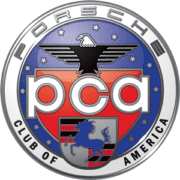Drivers Log
By Tom Swift
THE STICK VERSUS THE PADDLE No, this is not going to be an article on instruments used by the Victorians for child corporeal punishment. That’s a bit passé, plus I’m not qualified to evaluate the physiological impacts, as all I know about psychology I learned from a college roommate (and he majored in psychology only because that department did not require any classes on Mondays and Fridays). Better to “stick” to the automotive sticks and paddles that I know. My first real introduction to track driving was the Skip Barber threeday racing school. When I attended, the training vehicles were Formula Dodges; roughly 1300 pounds, 135 hp, and a four-speed non- synchromesh gearbox. We were expected to immediately perform heal-and-toe downshifts on transmissions that required double-clutching. The pedal control sequence is rather complicated1 and for the first half day, many of us felt like we had lost control over our lower extremities. By the end of the third day, however, the shift and brake sequence had become almost automatic, and we could focus on fun things like how quickly those cars spun if you lifted at the wrong moment. Fast forward some years and I’m on track at Pocono, driving a student’s McLaren MP4-12C; roughly 3300 pounds, 616 hp, and a seven-speed, dual-clutch gearbox. Pulling on one of the steering column mounted shift paddles results in a virtually instantaneous, perfectly smooth gear change, so shifting can be done in turns with no concern for the consequences. I found myself changing gears many more times per lap than I do in my own car, simply because I could. Obviously, these new double-clutch gearboxes are superior in many ways. Much faster and hence better lap times, no worries about upsetting the car mid corner via a poorly executed shift, no worries about mistakenly downshifting into, say, second instead of fourth, thereby sending the engine into a rev range best measured in $10,000 dollar increments. On the other hand, dual-clutch boxes are heavier, more expensive, more complex, and long term reliability is still an open question. Despite my lack of training in psychology or philosophical aesthetics, let me address this question of profound importance to DE’ers: Which is better? The stick or the paddle? We must begin by asking: What is it that makes the sport of high performance driving so compelling? Certainly it appeals to primitive emotions. Exhilaration when confronting certain death: “I just faced down that sabre toothed tiger” becomes “I got the throttle all the way to the floor in the esses at the Glen.” Glee when besting another: “My spear throw was truer than his” becomes “He had to let me pass.” Pride: “My chariot is covered in gold” becomes “My chariot is covered in carbon fiber.” It also appeals to the intellect. Specifically, satisfaction from mastering a difficult task: “How best to affix the saddle to the elephant” becomes “How best to balance front versus rear roll stiffness.”
There may also be a spiritual dimension: “Wow, this hair shirt really itches” becomes “Gee, that triple healand-toe downshift from sixth to third requires divine guidance.” Some aspects of our sport appeal to both, our intellect and our emotions. How many of us will admit to expending effort on a difficult and thankless task, like cleaning parts of our car that no other person on earth will see or care about, just for the sake of doing things properly? And that makes the choice between the stick and the paddle a tough one. Choose the paddle, and I just might be faster than Al Tafro at the Glen. Choose the stick, and I can revel in how wonderful I am to have mastered the art of driving a more difficult machine. Of course, this difficult choice is not new. “Hydraulic brakes? Too weak to yank the lever?” “Centrifugal spark advance? Not skilled enough to move the steering wheel mounted spark advance lever while shifting and braking?” Thus the question of the stick vs. the paddle must be viewed within a continuous historical framework of intellectual advances that convey benefits by substituting technology for skill. In other words, we are all wimps. RECENT EVENTS
September found us back at Watkins Glen for our two-day advanced event. We could not hold it last year as the repaving was underway. It was a good event, although attendance was
www.nnjr-pca.com l PORSCHEFORUS 7
down a bit, presumably because we could not secure our usual Monday and Tuesday but had to settle for a Wednesday and Thursday. Wednesday night we performed an experiment in human behavior. We served beer during pro coach Dave Scott’s excellent turn-by-turn lecture. The idea was to test whether we could drink and listen at the same time. I’m pleased to report highly positive test results, which may lead to future experiments along these same lines.
Next in this series: Whether air conditioned seats confer an unfair advantage in DE. __________________ 1 Heal-and-toe downshifts are a technique allowing two feet to operate three pedals simultaneously. The left foot operates the clutch pedal; the right foot operates the brake pedal while simultaneously “blipping” the throttle pedal to insure a smooth downshift. Double-clutching is a technique that is necessary to avoid grinding gears when downshifting a transmission that lacks shaft synchronizers. The sequence is: depress the clutch, shift into neutral, release the clutch, rev the engine, depress the clutch, shift into the lower gear, release the clutch.


